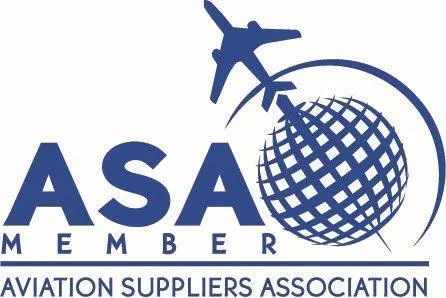
How Falsified MRO Records Jeopardize Aviation Safety
Aviation safety relies on one uncompromising standard: complete trust in the accuracy and integrity of aircraft maintenance records. Maintenance, Repair, and Overhaul (MRO) records serve as the foundation for tracking every procedure, inspection, and repair performed throughout an aircraft’s lifecycle. Any compromise in the authenticity of these records poses a serious threat to airworthiness, operational reliability, and passenger safety. When falsified data infiltrates MRO records, it introduces risks that cannot be detected solely through physical inspections.
Understanding the Function of MRO Records in Aviation
MRO records are far more than just administrative paperwork; they are the historical DNA of every aircraft and component. Each log entry verifies compliance with airworthiness directives, scheduled maintenance, repairs, and modifications throughout the aircraft’s service life. Maintenance records provide traceability for parts, ensuring that every component installed undergoes inspection and repair, according to OEM standards. Airlines, lessors, and regulatory bodies depend on the integrity of MRO records to make decisions about asset valuation, safety, and operational readiness.
Incomplete, missing, or falsified records prevent accurate assessments of component condition, remaining useful life, and regulatory compliance. According to Aviation Week, pre-buy inspections, essential for used aircraft transactions, often reveal maintenance issues that delay closings, while supply chain shortages and labor constraints further extend turnaround times.
Without complete records, airlines may unknowingly operate aircraft with overdue inspections, unapproved repairs, or counterfeit parts installed. Maintenance records are not only essential for safety but also fulfill legal requirements enforced by agencies such as the FAA, EASA, and ICAO.

A lack of transparency in MRO records often leads to inefficient maintenance cycles and higher operational costs. When a maintenance record cannot verify back-to-birth (BtB) traceability, the component may require expensive teardown inspections or immediate replacement. According to studies, labor costs alone account for approximately 15% of total aircraft transition costs due to the use of paper-based record management. The importance of MRO records cannot be overstated in both the commercial and financial dimensions of aviation operations.
The consequences of inaccurate records go beyond safety audits. Insurance claims, legal liability, and warranty disputes frequently arise when an investigation reveals falsified or missing records tied to a maintenance-related incident. Every stakeholder—from operators to lessors—depends on the assurance that documented maintenance reflects reality.
How Falsified Records Enter the Aviation Supply Chain
Falsified MRO records often originate from multiple points of failure within the maintenance and supply chain processes. In many cases, rogue suppliers or unauthorized repair facilities fabricate maintenance logs to bypass inspection requirements or conceal the use of non-conforming parts. Maintenance facilities facing time pressures or parts shortages may unintentionally rely on incomplete or inaccurate documentation when sourcing from secondary markets. The absence of centralized digital traceability amplifies the risk, allowing falsified records to be transferred between operators without detection.
Falsification may also occur internally when maintenance staff improperly document procedures to meet deadlines or overlook minor discrepancies. Inadequate oversight, combined with manual and paper-based record-keeping, introduces human error and intentional fraud risks.
Digital editing of scanned PDFs and forged signatures are common tactics used to fabricate compliance. Fragmented supply chains across multiple jurisdictions further complicate operators’ ability to verify authenticity without standardized digital tools.
The Safety Risks of Inaccurate MRO Records
Falsified MRO records present safety risks that extend far beyond the mechanical condition of a single part or system. An aircraft may appear airworthy during visual inspections while harboring hidden risks due to unverified repairs or missing compliance tasks. A forged entry that falsely indicates a completed inspection could allow a fatigue-critical component to remain in service beyond its safe operational limit. Once maintenance errors are buried under falsified logs, detection becomes nearly impossible without full traceability.
The aviation industry has witnessed multiple cases where undocumented repairs contributed to structural failures, hydraulic system malfunctions, or engine anomalies. In 2024, the FAA launched an investigation into Boeing after the company reported that workers had falsified inspection records on certain 787 Dreamliner aircraft, raising concerns about safety and compliance.
Beyond mechanical risks, falsified MRO records disrupt the predictive maintenance models that operators rely on for managing fleet health. Inaccurate data skews component reliability forecasts, leading to unexpected failures and inflated maintenance costs. Airlines lose confidence in their operational data, forcing conservative maintenance decisions that increase downtime without necessarily improving safety.
Insurance underwriters now routinely scrutinize the quality of MRO documentation during claim disputes following incidents. Policies may be voided if investigations reveal that undocumented or falsified repairs contributed to a failure. This financial liability compounds the operational risks, creating an urgent case for the aviation industry to eliminate documentation vulnerabilities.
The Financial and Operational Impact of Poor Records
While safety remains the primary concern, the financial consequences of falsified or incomplete MRO records are equally severe. Aircraft with missing or unverifiable maintenance records often face devaluation during resale, lease return, or financing events. A 2024 KPMG aviation finance report revealed that asset values drop by 10% to 20% when full back-to-birth traceability cannot be confirmed. Lessors may reject aircraft redeliveries or impose costly maintenance requirements to compensate for documentation gaps.

Operational impacts include unscheduled groundings, canceled flights, and costly component teardowns required to establish compliance. Airlines have reported losing millions annually due to delays directly tied to record discrepancies discovered during audits or inspections.
Maintenance facilities also suffer when undocumented parts require re-verification, often necessitating time-consuming non-destructive testing or disassembly. These processes divert labor from scheduled maintenance tasks, reducing overall throughput and efficiency. Additionally, legal disputes between lessors, operators, and insurers become increasingly common when maintenance records fail to support claims or warranty coverage.
Customer trust erodes when operational disruptions are linked to maintenance-related failures. Airlines that face regulatory scrutiny for record falsification incidents risk long-term brand damage and potential loss of operating certificates in severe cases.
Digitizing MRO Records: The Path Forward for Safety and Compliance
Eliminating the risks associated with falsified MRO records requires a transition from paper-based and fragmented digital systems to secure, end-to-end traceability solutions. Digital MRO records provide tamper-proof, searchable documentation that connects every maintenance event to the aircraft’s lifecycle and its components. Instead of relying on static PDFs or paper logs, airlines and MROs benefit from automated verification of compliance, back-to-birth traceability, and real-time document validation.
Modern platforms null records against regulatory databases and OEM standards. A 2025 report from the International Civil Aviation Organization (ICAO) showed that organizations adopting digital traceability reduced audit-related groundings by 48%. The efficiency gains extend to faster lease transitions, reduced downtime, and simplified compliance audits.
Digital MRO records also enhance collaboration between operators, lessors, OEMs, and regulators by providing a single source of truth. Blockchain-backed solutions further improve integrity by offering immutable records that cannot be retroactively altered. Maintenance planners gain accurate insights into fleet health, while regulators enjoy improved oversight with less manual review.
The growing complexity of aircraft systems and supply chains necessitates that documentation practices evolve in tandem with technological advancements. Preventing the next major falsification crisis depends on the industry's willingness to embrace comprehensive digital solutions.
Protect Your Fleet with Verified MRO Records
MRO records are the foundation of aviation safety, operational reliability, and regulatory compliance. ProvenAir delivers a comprehensive, automated digital traceability platform that eliminates the risks associated with falsified maintenance records. Our solution ensures back-to-birth traceability, accelerates audits, and enhances operational efficiency across the aviation supply chain. Learn how ProvenAir safeguards your fleet today.


